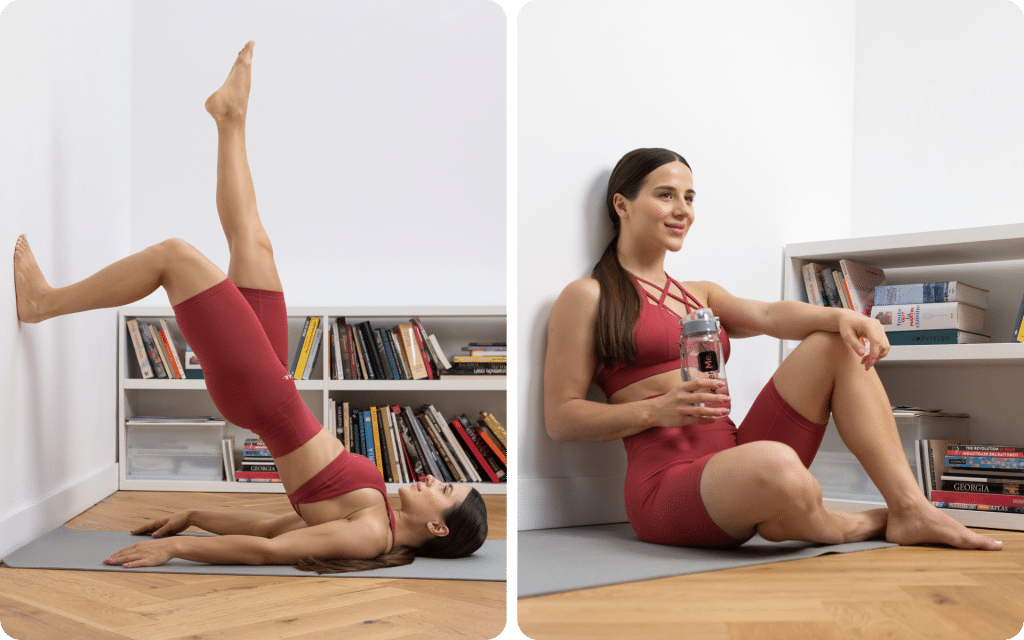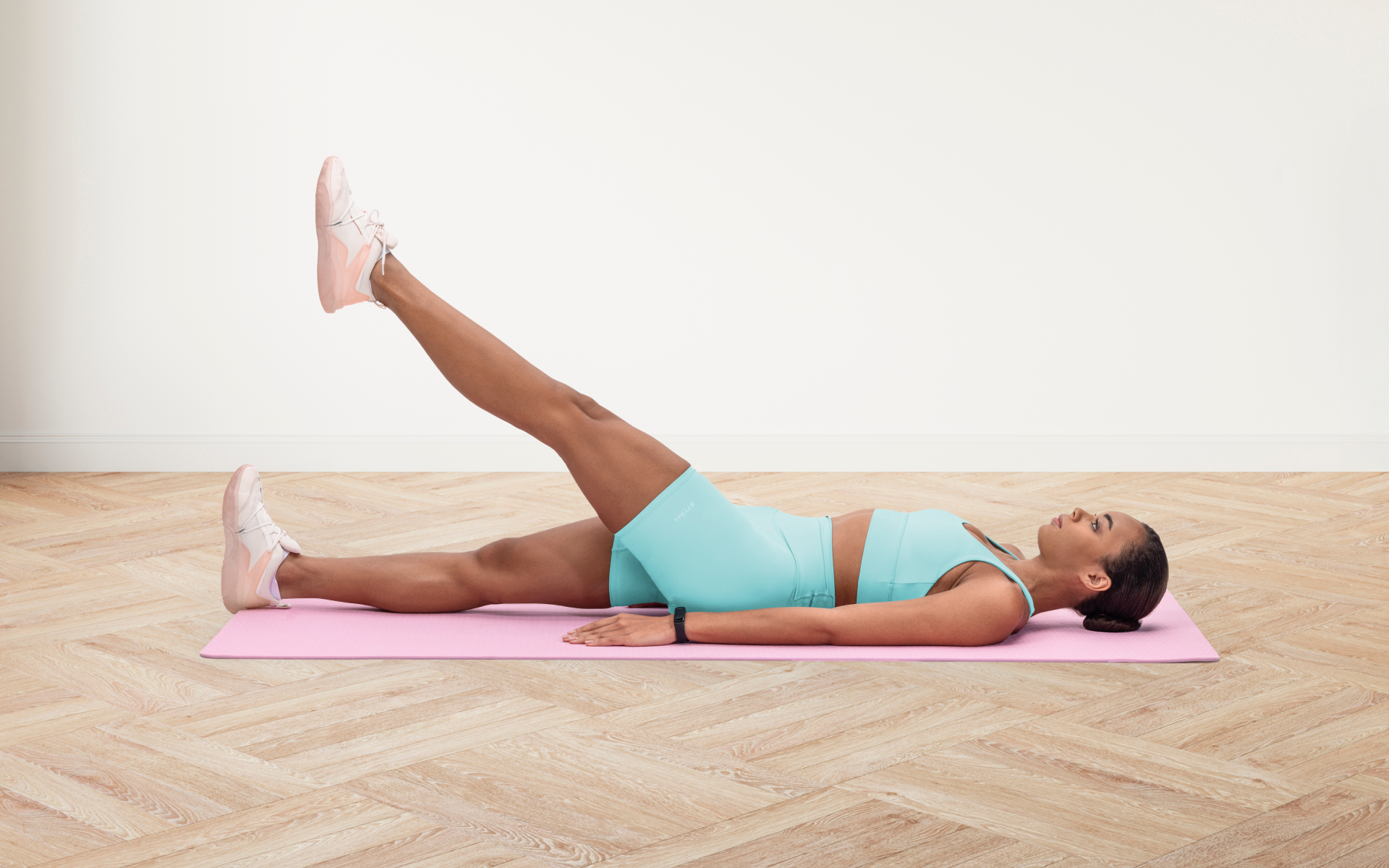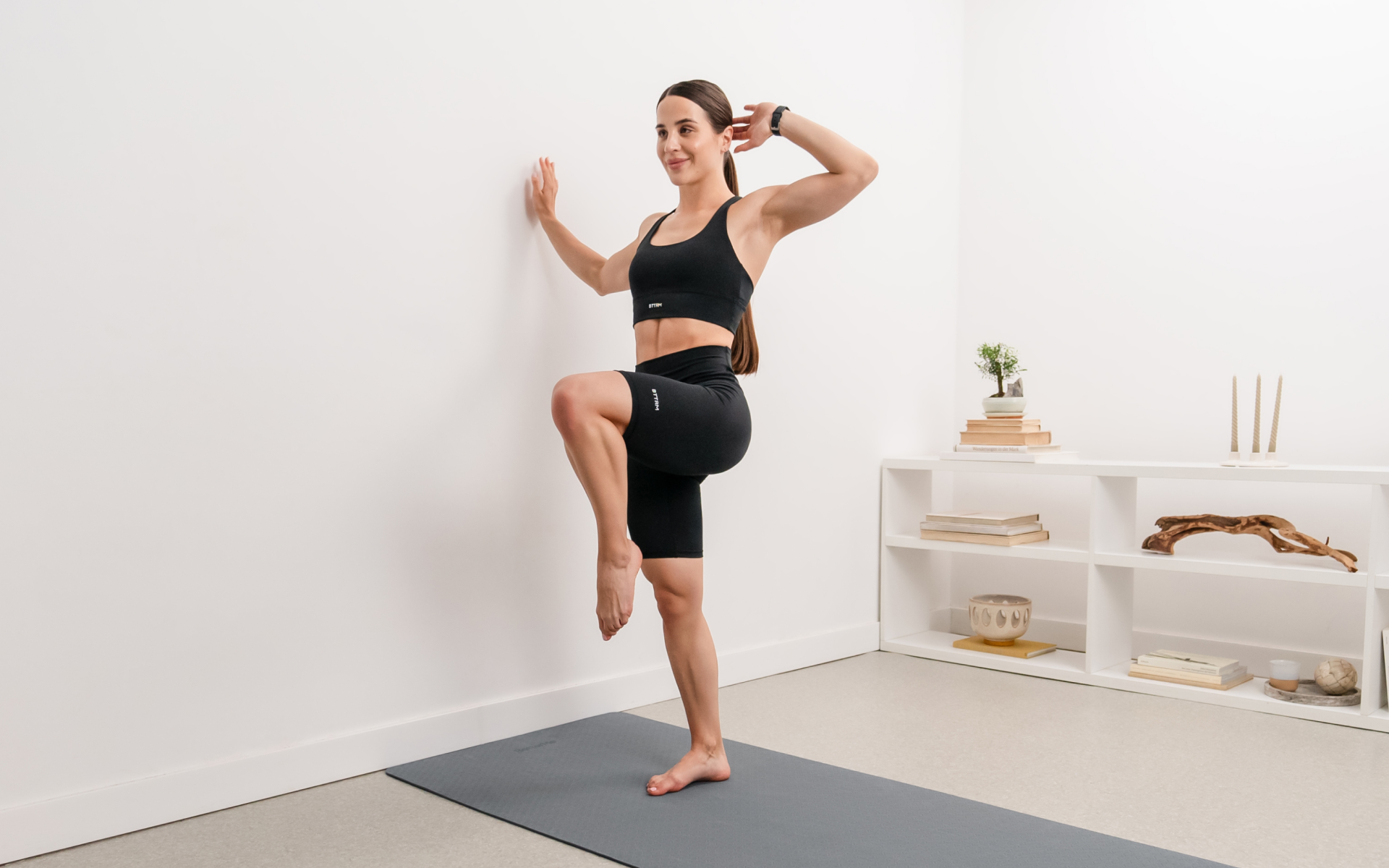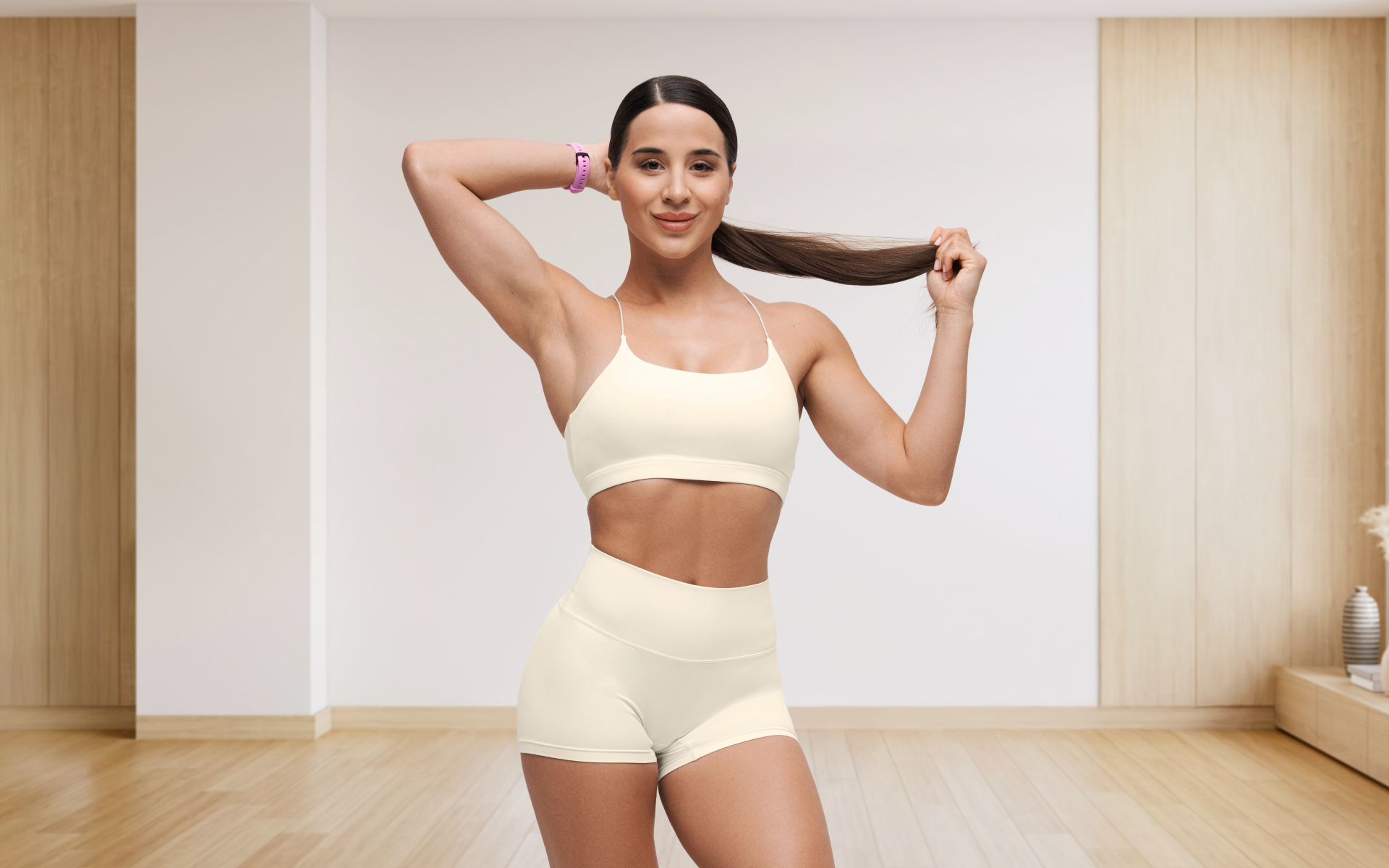Pilates is a unique workout for multiple reasons: it offers a range of perks, from improved flexibility to alleviated back pain. It’s also compatible with all fitness levels, whether you’re a beginner or more avid athlete. Pilates can become an important part of your exercise routine and is suitable for any age and sex.
One question that often comes up when discussing Pilates is whether it’s considered cardio or strength training. We’ll dive into the answer to this question and much more.
Can I Replace Cardio with Pilates?
Shortly put, not exactly.
There are distinct differences between Pilates and traditional cardio-specific workouts.
- Pilates consists of various strength and flexibility exercises. It emphasizes a mind-body connection, with a focus on breathing and core stability. Pilates exercises are performed in sets that strategically work muscles without exhausting them. Many routines use special equipment for specific purposes.
- Cardio workouts involve coordinated physical movements that increase your heart rate for an extended period of time. This increase in heart rate delivers more blood throughout your body, which increases oxygen transport to the necessary areas. (1).
Great examples of cardio workouts include:
- Running
- Jogging
- Cycling
- Swimming
- Jumping rope
- Rowing
Pilates will also typically elevate your heart rate and provide cardiovascular benefits. However, its incorporation of strength, core stability, and flexibility training means it shouldn’t be categorized as strictly “cardio” training specifically. (3).
Reasons why BetterMe is a safe bet: a wide range of calorie-blasting workouts, finger-licking recipes, 24/7 support, challenges that’ll keep you on your best game, and that just scratches the surface! Start using our app and watch the magic happen.
What Kind of Exercise Is Pilates?
Pilates is considered a mind-body mode of exercise that focuses on core strength, stability, and flexibility. It involves a series of repetitive movements performed on a mat or specialized equipment, emphasizing controlled movements and proper alignment.
The exercises are designed to develop the body through muscular activation that stems from the core, promoting overall body awareness and efficient movement. Depending on how your Pilates program is structured, it may incorporate cardio-type training, strength training, and flexibility training, but it’s not specifically targeted at any one of these. (4).
Read more: 6 Pilates Wall Exercises for Beginners Who Want to Strengthen Their Core
Is Pilates Low-Intensity Cardio?
Pilates may provide cardiovascular benefits if the routine is structured with an approach that allows it, but Pilates isn’t generally classified as low-intensity cardio on its own. Pilates can be thought of as a low-impact form of exercise that incorporates cardio components within the practice. In addition, some Pilates programs incorporate more cardio than others, so the answer to this question is highly dependent on a specific program’s structure.
Is Pilates More Strength or Cardio?
People who are about to incorporate Pilates into their routine may wonder if Pilates is more cardio or strength training.
Pilates vs Strength Training debates are still being discussed by fitness experts, but generally, Pilates typically incorporates more strength training components than it does steady-state cardio. The reason lies in its primary focus on building core strength, stability, and flexibility through controlled movements.
That being said, Pilates involves significantly different training principles than traditional strength training and doesn’t typically involve the volume, intensity, and rest structure necessary for significant muscular strength or hypertrophy improvements. That’s also not the aim or purpose of Pilates specifically as it is with traditional strength training.
When it comes to cardio, Pilates can also incorporate elements of cardiovascular training, depending on the intensity and pace of the workout.
In conclusion, we can state that Pilates is considered more of a strength training due to its emphasis on resistance exercises that target the core, arms, legs, and back.
Read more: How Many Days A Week Should You Work Out: Prepare To Make Some Room In Your Schedule
Is Cardio Pilates Good for Weight Loss?
Is Pilates cardio for weight loss? We’ve already learned that some intense Pilates exercises can count as cardio workouts and according to one study, may be effective for your weight-loss goals.
One meta-analysis discovered that Pilates may be a helpful method for reducing body weight percentage and body fat among obese or overweight people (6). However, this assumes a well-controlled diet.
So, when it comes to the main question, Does Pilates Help Lose Weight? people need to understand that weight reduction requires a calorie deficit and the incorporation of a nutritious diet. Eating foods that are loaded with protein will keep a person satiated for longer and more likely to stay in the calorie deficit.
If you wish to free yourself from all the extra pounds that have been weighing you down for way too long, start using the BetterMe: Health Coaching app and overhaul your entire life!
Is Reformer Pilates Strength or Cardio?
As mentioned in previous sections, a mode of exercise can be several things at once. Reformer Pilates can be both a form of strength training and cardio, depending on how it’s performed.
Reformer Pilates primarily focuses on building core strength, stability, and flexibility through controlled movements that use the resistance provided by the reformer machine. This challenge to the musculoskeletal system makes it an effective form of strength training, particularly for the core, back, and legs.
When it’s performed at higher intensity with quick, dynamic movements or a high-intensity interval training (HIIT) structure, reformer Pilates can also provide some great cardiovascular benefits.
For these reasons, reformer Pilates can incorporate both strength and cardio elements, depending on the training structure.
This depends on what your definition of getting “in shape” is. Pilates does a wonderful job of helping people to get moving, burn some extra calories, build core stability, and improve postural control. However, if your goal is to run a marathon or build a significant amount of strength and muscle mass, Pilates won’t allow you to do that on its own. Firstly, determine your goals, then find the most direct path to get there. Pilates may be enough on its own for building strength and endurance, and enhancing flexibility. It can also be enough to keep you fit as long as you eat healthy food, sleep well, and lead an active lifestyle in general. Both Pilates and gym training are great ways to boost your overall physical health. However, their benefits may differ so you’ll have to identify your fitness goals. If you want to build significant strength and muscle size, trekking to the gym would be a better option. If you’re looking for low-intensity training where the mind-body connection is blended with different exercises for your entire body, then Pilates is the best choice. The best-case scenario here may be a combination of both Pilates and gym training, where you incorporate both practices into your weekly schedule. However, once again, this all depends on your goals. As always, this depends on your goals. Pilates is an activity that focuses on your flexibility and strength through slower intentional movements, while HIIT workouts prioritize fast-paced moves that help burn more fat and boost your cardiovascular endurance. Some people integrate both Pilates and HIIT workouts into their routine as their combination can make you more toned and stronger. Frequently Asked Questions
Can you get in shape doing just Pilates?
Is Pilates enough to stay fit?
Is Pilates better than the gym?
Which is better: HIIT or Pilates?
The Bottom Line
Is Pilates cardio or strength training? Generally, Pilates isn’t exclusively either one of these and combines elements from both. Depending on how the practice is structured, Pilates can provide excellent benefits for your musculoskeletal and cardiovascular systems.
DISCLAIMER:
This article is intended for general informational purposes only and does not serve to address individual circumstances. It is not a substitute for professional advice or help and should not be relied on for making any kind of decision-making. Any action taken as a direct or indirect result of the information in this article is entirely at your own risk and is your sole responsibility.
BetterMe, its content staff, and its medical advisors accept no responsibility for inaccuracies, errors, misstatements, inconsistencies, or omissions and specifically disclaim any liability, loss or risk, personal, professional or otherwise, which may be incurred as a consequence, directly or indirectly, of the use and/or application of any content.
You should always seek the advice of your physician or other qualified health provider with any questions you may have regarding a medical condition or your specific situation. Never disregard professional medical advice or delay seeking it because of BetterMe content. If you suspect or think you may have a medical emergency, call your doctor.
SOURCES:
- The (Many) Benefits of a Cardio Workout (2023, clevelandclinic.org)
- The effects of Pilates vs. aerobic training on cardiorespiratory fitness, isokinetic muscular strength, body composition, and functional tasks outcomes for individuals who are overweight/obese: a clinical trial (2019, ncbi.nlm.nih.gov)
- Pilates Method Improves Cardiorespiratory Fitness: A Systematic Review and Meta-Analysis (2019, ncbi.nlm.nih.gov)
- Pilates 101: What It Is and Health Benefits (2023, clevelandclinic.org)
- What to Know About Low-Intensity Workouts (2024, webmd.com)
- Pilates for Overweight or Obesity: A Meta-Analysis (2021, ncbi.nlm.nih.gov)










